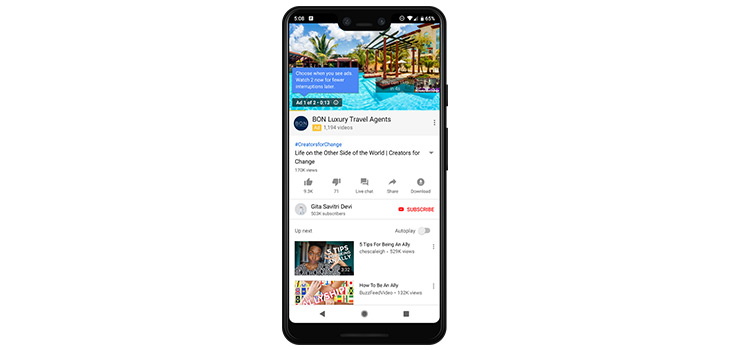The way we watch video is always changing and fewer interruptions is correlated to better user metrics, including less abandonment of content and higher rates of ad viewing. And to give users a fine viewing experience, Google-owned YouTube is testing ad-pods -- two ads stacked back to back, where viewers have the option to skip directly to the content if it’s not the right ad for them.
According to YouTube, this will make more sense especially during longer viewing sessions as users will see two ads in a break, meaning they’re less likely to be interrupted by ads later.
“In fact, those users will experience up to 40 per cent fewer interruptions by ads in the session. One early experiment results also show an 8-11 per cent increase in unique reach and a 5-10 per cent increase in frequency for advertisers, with no impact to Brand Lift metrics,” said Khushbu Rathi, Product Manager, Video Ads.
Ad-pods will be first launched on desktop this year followed by mobile and TV screens.
Example of an ad pod experience on mobile.

Also, the video viewing on YouTube has become more self-directed, as more viewers than ever before hop into their home or trending feeds and scroll to find a recommended video. In fact, over the last three years, watch time from content users discover on the YouTube homepage has grown 10 times. To respond to this, YouTube now comes with TrueView video discovery ads to the YouTube home feed, along with the Masthead and Universal App campaign ads.
According to a YouTube research, users watch over 180 million hours of YouTube on TV screens every day. Last month, the company introduced the TV screen device type in Google Ads and Display and Video 360, allowing advertisers to tailor their campaigns for connected TVs.
“In the face of these burgeoning user trends—as well as the next wave, and the next—we’ll continue working to build the ideal video viewing experience, and keep thinking up ways to deliver value for our advertiser partners,” added Rathi.
